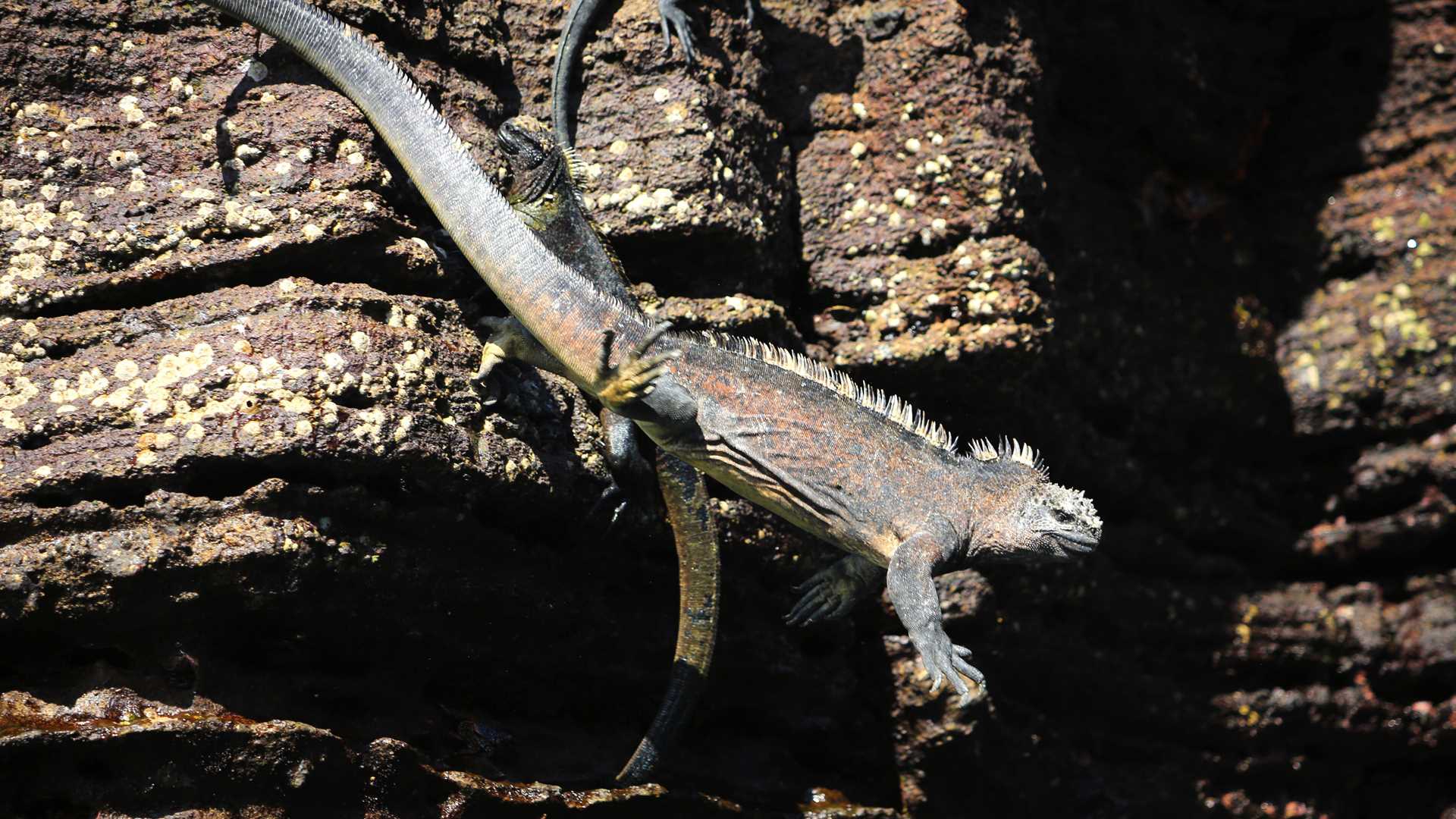As we get closer to our final day of expedition, guests on board National Geographic Islander II visited two special sites on Isabela and Fernandina Islands. After a 10-hour navigation and crossing the Equator, we stopped by Punta Vicenta Roca, located at the mouth of the seahorse- shaped island of Isabela. Here, we had the chance to admire the walls of the extinct Ecuador Volcano as well as the wonderful marine life. This side of the island gets drenched in nutrients from the Cromwell current. In the afternoon, we walked among the fascinating marine iguanas of Fernandina Island.
- Daily Expedition Reports
- 07 Jun 2023
Isabela and Fernandina, 6/7/2023, National Geographic Islander II
- Aboard the National Geographic Islander II
- Galápagos
Felipe Wittmer, Naturalist
Felipe’s connection with the Galapagos Archipelago dates back to his great grandparents, who came to the islands in the 1930s. The Wittmer family moved to the island of Floreana and were one of the first families to settle in the Galapagos. Felipe’s ...
Read MoreShare Report
Galápagos Escape: An 8-Day Voyage
VIEW ITINERARYRelated Reports
6/23/2025
Read
National Geographic Islander II
Española Island
Today we visited Española Island, the southernmost—and one of the most spectacular—of all the Galápagos Islands. Known for its unique wildlife and dramatic landscapes, Española offered us a day full of unforgettable encounters. In the morning, we landed at Gardner Bay, where a long stretch of white coral sand welcomed us. Galápagos sea lions lounged along the shore, completely unfazed by our presence. Offshore, we snorkeled in the clear waters among colorful reef fish and Pacific green sea turtles. Playful sea lions swirled around us like underwater acrobats. In the afternoon, we explored Punta Suárez, one of the best wildlife viewing sites in the entire archipelago. The trail led us through colonies of Nazca boobies and blue-footed boobies, some engaged in nesting or courtship dances. We also witnessed waved albatrosses, many sitting on eggs or gliding in the wind above the cliffs. The highlight for many was watching a pair of albatrosses perform their elaborate, synchronized courtship ritual, full of beak clacking and head swaying. As we approached the cliff’s edge, we were treated to the dramatic sight of waves crashing against the rocks and the famous blowhole, which sent bursts of water high into the air. With seabirds soaring overhead and marine iguanas sunbathing in every direction, the magic of Española was on full display.
6/22/2025
Read
National Geographic Islander II
Floreana Island
Today the guests of National Geographic Islander II had a chance to snorkel at Champion Islet, just off Floreana Island. It was a breathtaking expedition to one of the most vibrant marine ecosystems in the Galapagos. As soon as we slipped into the water, we were greeted by schools of colorful fish and playful Galapagos sea lions.







